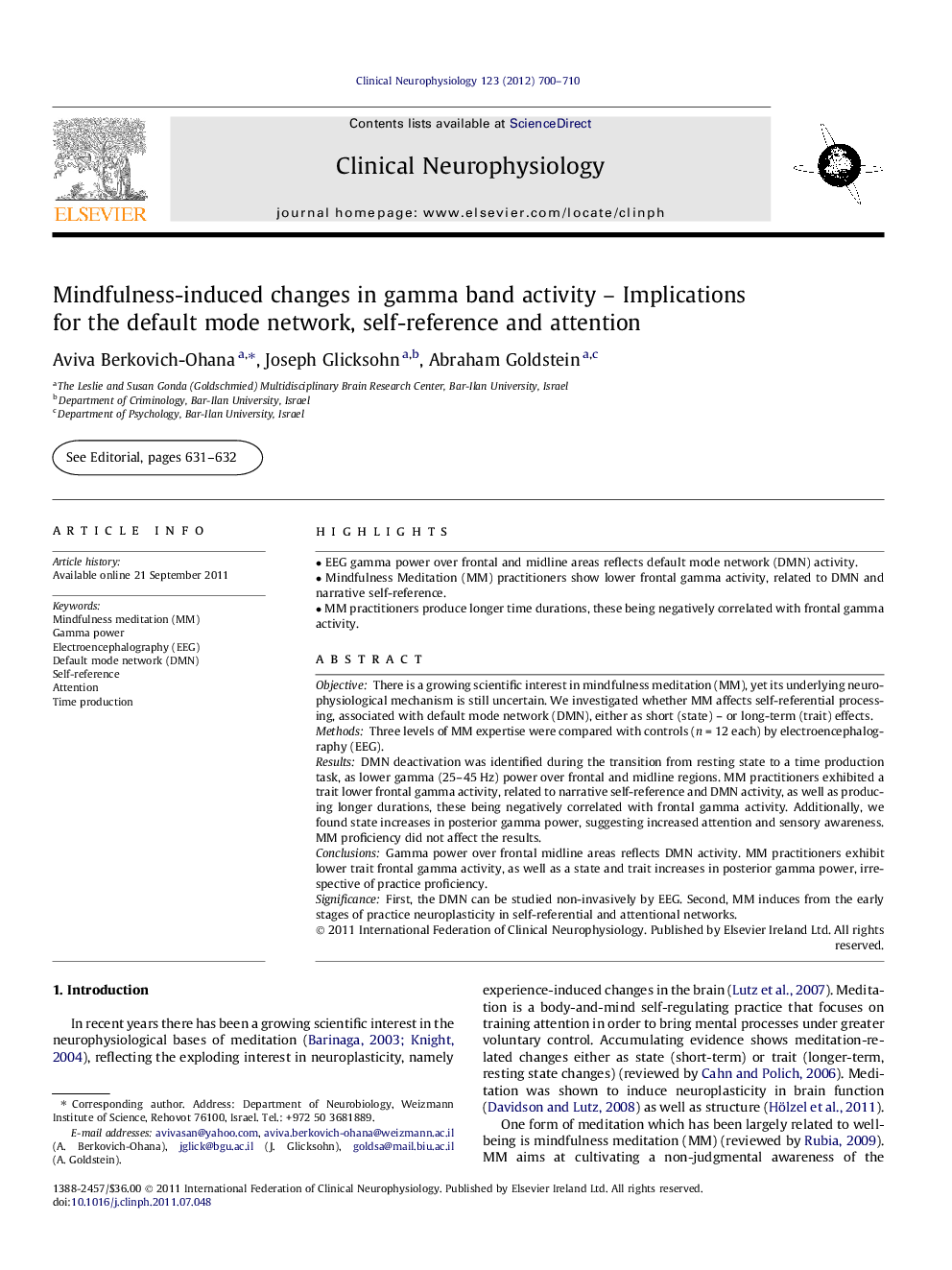| Article ID | Journal | Published Year | Pages | File Type |
|---|---|---|---|---|
| 3043601 | Clinical Neurophysiology | 2012 | 11 Pages |
ObjectiveThere is a growing scientific interest in mindfulness meditation (MM), yet its underlying neurophysiological mechanism is still uncertain. We investigated whether MM affects self-referential processing, associated with default mode network (DMN), either as short (state) – or long-term (trait) effects.MethodsThree levels of MM expertise were compared with controls (n = 12 each) by electroencephalography (EEG).ResultsDMN deactivation was identified during the transition from resting state to a time production task, as lower gamma (25–45 Hz) power over frontal and midline regions. MM practitioners exhibited a trait lower frontal gamma activity, related to narrative self-reference and DMN activity, as well as producing longer durations, these being negatively correlated with frontal gamma activity. Additionally, we found state increases in posterior gamma power, suggesting increased attention and sensory awareness. MM proficiency did not affect the results.ConclusionsGamma power over frontal midline areas reflects DMN activity. MM practitioners exhibit lower trait frontal gamma activity, as well as a state and trait increases in posterior gamma power, irrespective of practice proficiency.SignificanceFirst, the DMN can be studied non-invasively by EEG. Second, MM induces from the early stages of practice neuroplasticity in self-referential and attentional networks.
► EEG gamma power over frontal and midline areas reflects default mode network (DMN) activity. ► Mindfulness Meditation (MM) practitioners show lower frontal gamma activity, related to DMN and narrative self-reference. ► MM practitioners produce longer time durations, these being negatively correlated with frontal gamma activity.
